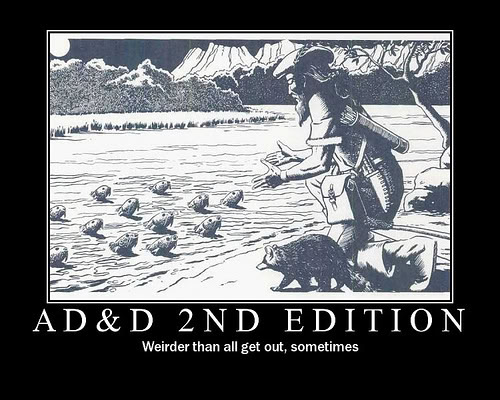Ad&d 2nd Edition Books Pdf

Because anno Domini means “in the year of the Lord,” its abbreviation a.d. Was originally placed before rather than after a date: The Roman conquest of Britain began in a.d. 43 (or began a.d. In edited writing, it is still usually placed before the date. But, by analogy with the position of b.c. “before Christ,” which always appears after a date ( Caesar was assassinated in 44 b.c.), a.d. Is also frequently found after the date in all types of writing, including historical works: The Roman emperor Claudius I lived from 10 b.c.
Despite its literal meaning, a.d. Is also used to designate centuries, being placed after the specified century: the second century a.d. In strict usage, ad is only employed with specific years: he died in 1621 ad, but he died in the 17th century (and not the 17th century ad). Formerly the practice was to write ad preceding the date ( ad 1621), and it is also strictly correct to omit in when ad is used, since this is already contained in the meaning of the Latin anno Domini (in the year of Our Lord), but this is no longer general practice. Bc is used with both specific dates and indications of the period: Heraclitus was born about 540 bc; the battle took place in the 4th century bc. 1570s, from Latin Anno Domini 'Year of the Lord.' Mame 0 153 Rom Settings.
Needed to be done for the AD&D 2nd Edition game are the players who mailed in. The AD&D 2nd. Edition game has demanded and received hours upon months of attention. Now that it is finally coming out, the feeling of relief is beginning to set in. Both books are a lot bigger: 25% more pages in the PHB, 33% more in.

First put forth by Dionysius Exiguus in 527 or 533 C.E., but at first used only for Church business. Introduced in Italy in 7c., France (partially) in 8c. In England, first found in a charter of 680 C.E. Ordained for all ecclesiastical documents in England by the Council of Chelsea, July 27, 816.
The resistance to it in part might have come because Dionysius chose 754 A.U.C. Redgate Sql Toolbelt 2010 Serial. As the birth year of Jesus, while many early Christians would have thought it was 750 A.U.C.
Bond, 'Handy-Book of Rules and Tables for Verifying Dates With the Christian Era,' 4th ed., London: George Bell & Sons, 1889] A.C., for Anno Christi, also was common 17c.
Usage: The abbreviation was orig. Placed before a date and is still usu. Preferred in edited writing: The Roman conquest of Britain began in 43 (or, sometimes, began 43). The abbreviation (before Christ) is always placed after a date: Caesar was assassinated in 44 But by analogy with the position of, is frequently found after the date in all types of writing: Claudius I lived from 10 to 54 This abbreviation may also designate centuries, being placed after the century specified: the second century Some writers prefer to use (Common Era) and (Before the Common Era) to avoid the religious overtones of and.